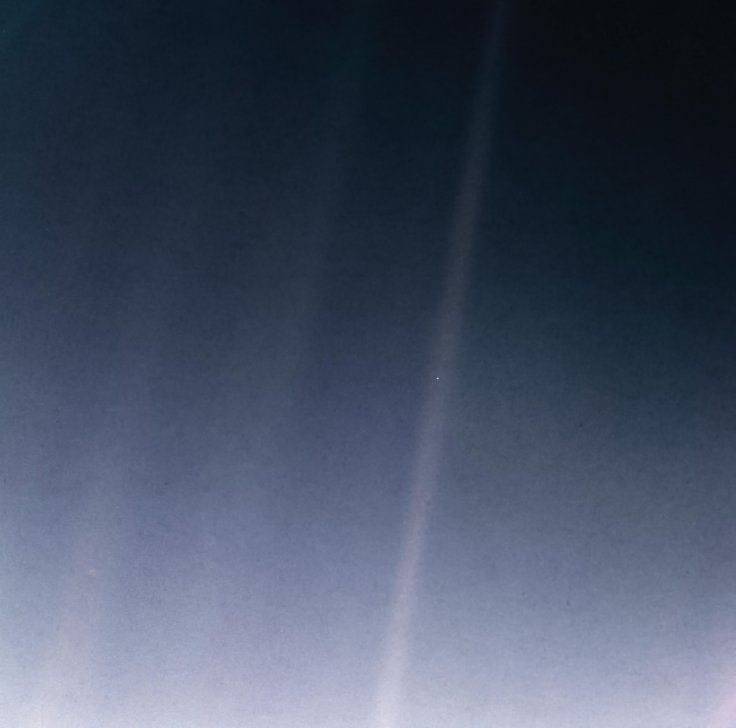It was on February 14, 1990, that NASA's Voyager probe shut down its camera before stopping its operations. Around 30 minutes before the shutdown, the space probe captured an image that showed the earth as a tiny speck of dust in the vastness of the space.
The picture later gained widespread popularity, and people called it 'Pale Blue Dot'. Now, 30 years after the release of the original, the United States space agency has unveiled a new version of this iconic portrait, and it is as mindblowing as ever.
Pale Blue Dot

The newly released image was made by Kevin M Gill, an engineer at NASA's Jet Propulsion Laboratory. Using advanced software applications, Gill processed the original data captured by Voyager 1 and as he rebalanced the colour channels, the image became crystal clear with all minute details visible.
"The planet occupies less than a single pixel in the image and thus is not fully resolved. The actual width of the planet on the sky was less than one pixel in Voyager's camera. By contrast, Jupiter and Saturn were large enough to fill a full pixel in their family portrait images. The direction of the Sun is toward the bottom of the view where the image is brightest. Rays of sunlight scattered within the camera optics stretch across the scene. One of those light rays happens to have intersected dramatically with Earth," wrote NASA on their website.
Carl Sagan's foresight
It was legendary American astronomer Carl Sagan who initially called earth 'Pale Blue Dot'. Interestingly, capturing the image of the earth was not a part of Voyager 1's mission, but it was a wild idea of Sagan which made the mission take this breathtaking photo.
"The Earth is a very small stage in a vast cosmic arena. Think of the rivers of blood spilt by all those generals and emperors so that, in glory and triumph, they could become the momentary masters of a fraction of a dot. Think of the endless cruelties visited by the inhabitants of one corner of this pixel on the scarcely distinguishable inhabitants of some other corner, how frequent their misunderstandings, how eager they are to kill one another, how fervent their hatreds," wrote Sagan on his book Pale Blue Dot.









